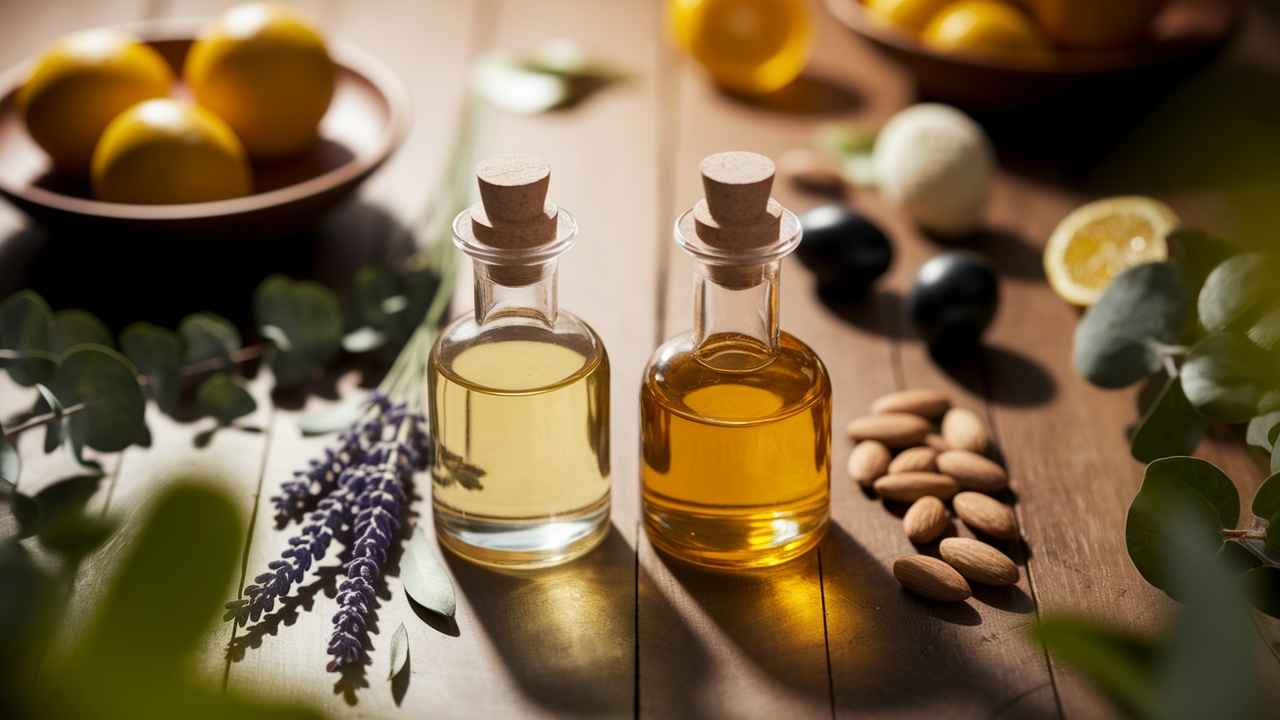From cooking and skincare to aromatherapy and medicinal uses, oils are a crucial part of our lives. Unfortunately, a lot of us mistakenly confuse essential oils with regular oils without understanding that they have different usages and characteristics.
This guide will help you understand the differences between essential oils and normal oils and their uses, benefits, and safety precautions, to decide on the better oil for you.
What is Essential Oil?
Essential oils are very potent extracts from plants, collected by distillation or cold pressing. These oils encapsulate the plant’s essence, scent, and healing properties.
Characteristics of Essential Oils:
- Previously too concentrated and strong scented
- Taken from flowers, leaves, bark, and roots
- Tend to evaporate quickly and are volatile
- Aromatherapies, Skin cares, and holistic
Common Types of Essential Oils
- Lavender Oil – Provides calming qualities and reduces stress
- Tea Tree Oil – Applied to its antibacterial and antifungal properties
- Peppermint Oil – Headaches and digestion
- Eucalyptus Oil – For respiratory relief
- Lemon Oil – Commonly used and well known for its refreshing and cleansing benefits.
Also Read: Which Essential Oil Plants Are Most Popular?
What is Normal Oil?
Also known as carrier oils and fixed oils, regular oils are non-volatile oils derived from seeds, nuts, and fruits. They are used extensively in cooking, cosmetics, and industrial uses.
Characteristics of Normal Oils:
- They are non-volatile and these do not get vapourised fast
- Analysed by pressing or solvent extraction
- Ypsy is hitched to all floats on around November 2019 for cooking, skincare, and lubrication.
- Can be consumed safely
- For one, they supply it with the necessary fatty acids and nutrients.
Common Types of Normal Oils:
- Cooking and Skincare with Olive Oil — A Presence
- Coconut Oil – for using in cooking and in hair care
- Almond Oil – A moisture-rich oil
- Sunflower Oil – Used in cooking and cosmetics
- Carrier Oil – One of the most common oils used for dilution with essential oils.
Key Differences Between Essential Oils and Normal Oils

| Feature | Essential Oil | Regular Oil |
| Extraction | Distillation or cold pressing | Pressing or solvent extraction |
| Volatility | Highly volatile | Non-volatile |
| Usage | Aromatherapy, skincare, medicinal | Cooking, skincare, industrial |
| Consumption | Not safe for direct ingestion | Safe for consumption |
| Nutritional Value | Lacks essential fatty acids | Rich in essential fatty acids |
How to Use Essential Oils and Normal Oils
How to Use Essential Oils Safely
- Always dilute w a carrier oil before putting on skin
- Aromatherapy – Using A Diffuser
- Do not consume unless recommended by a healthcare provider.
- Do a patch test to see if you’re allergic
Also Read: Simple Ways to Use Essential Oils for a Healthier Lifestyle
How to Use Normal Oils
- It is used in cooking and in salad dressings
- To use as a moisturizer for skin and hair
- Mix for massages with essential oils
- Use in beauty and skincare DIYs
Benefits of Essential Oils and Normal Oils
Benefits of Essential Oils
- Encourage relaxation and relieve stress
- Have antibacterial and anti fungal properties
- Assist in respiratory health and congestion relief
- Improve focus and mental clarity
- Aiding the skin with acne and inflammation reduction
Benefits of Normal Oils
- Give essential fatty acids and vitamins
- Enhances moisture and elasticity in the skin
- Keep heart healthy when drink in moderation
- Act as a natural lubricant and emollient
- Strengthen hair and lower breakage
Essential Oil Safety Tips
- Essential oils should never be used undiluted on skin
- Avoid areas inhabited by pets and children
- Store in dark glass bottles protected from sunlight
- If pregnant or nursing, consult a doctor before use
Also Read: Struggling to Sleep? Try These Essential Oils Tonight
Normal Oils Safety Tips
- Store oils safely to prevent going rancid
- Test for allergies before applying to skin
- Choose cooking oils that are food-grade
- Oils to avoid heating, and what to heat them in
Conclusion
Normal and essential oils have different characteristics and uses. Essential oils are popular for functional and aromatic uses, whereas regular oils are used for culinary and cosmetic purposes to nourish and hydrate.
Clarifying the differences between them and how to use them safely makes it possible for you to take full advantage of the benefits they can have in your day to day.
Still unsure which oil is right for your product or formulation? At P. P. Sheth Aromas Pvt. Ltd, a best essential oil distributor in India, we supply premium essential oils, carrier oils, and aroma ingredients trusted by top cosmetic, pharma, and personal care brands.
Contact us today to get expert guidance or request a sample.
Most Recent Posts









